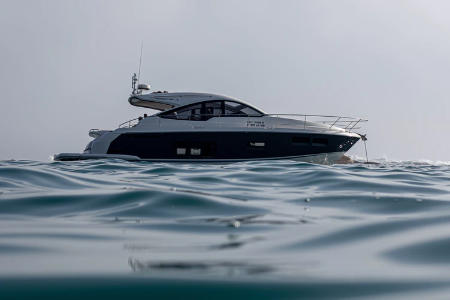Marine Detailing and Upholstery
Marina’s Cape Coral Boat Repair is dedicated to enhancing your life on the water. We can help you with your paddling, boating, fishing, and sailing needs.
Cape Coral Boat Hull Maintenance
The warm South Florida waters are home to many marine life, including oysters, crabs, algae and barnacles. They can cause damage to your boat’s engine and cosmetically. They can increase engine temperatures and decrease fuel mileage.
We will get in the water to remove any barnacles or zincs from your props, clean your hull and advise you about the condition of your bottom paint. There’s one thing you don’t need to worry about if you want to enjoy your boat. We want you to just be able to turn the key and go!
Boat and Watercraft Upkeep
A clean boat is a happy one. Now that you are able to clean a boat, you should smile from gunwale à gunwale.
Our technicians perform a thorough checklist during each scheduled inspection. We address any minor issues, such as a low fluid level or a dead battery, on the spot. If necessary, we provide a detailed report and photos, along with a quote.
Costs for preventative maintenance vary depending on the vessel’s size, age, and other factors. We are happy to come and inspect your vessel and give you a customized quote.
Gelcoat and Hull Care
Owner apathy and a dull, worn-out gelcoat go hand in glove. Some owners believe that shiny, bright boats are less efficient at catching fish and sail faster, so it’s not worth the effort to maintain them. Keep in mind, however, that maintaining your boat’s gelcoat can help you catch more customers if you ever decide to sell it.

Fiberglass Care and Repairs
Fiberglass is used on all kinds of boats, both indoors and out. It can’t be treated as other fiberglass parts because it would make it slippery, which would defeat the purpose of non-skid surfaces. This process can also be done with a stiff bristle brush and soap. You can use a cleaner with a little bleach like Soft Scrub to get rid of tough stains. However, it is best to limit its use and ensure that it is thoroughly rinsed off. Next, apply a non-skid treatment such as Star Brite Non Skid Deck Wax or Woody Wax. These products technically aren’t wax in the traditional sense. They are polymers that shine and protect the nonskid while making it slipper-free. Think of them as suntan lotion for your deck.
Vinyl Maintenance
Vinyl is common on all kinds of boats, including those with lots of seating for cruising and watersports. Anti-microbials are used in modern marine vinyls. These are the best protection against mold and mildew. Avoid harsh chemicals that could damage them. Keep vinyls clean and give them a gentle wash with soapy water and a soft cloth every time you use your boat. You should use a marine vinyl cleaner to remove stubborn stains. Then rinse the boat thoroughly and apply a vinyl protector.
Interior Cushions and Upholstery
Over time, interior cushions can get moldy, stained by spills and infested with mildew. First, remove the covers and wash in cold water. Non-vinyl cushion covers can be machine washed. However, they should not be washed in hot water or dried in the dryer as shrinkage can occur. First, sprinkle baking soda on the cushion. Then let it rest for a while and then shake it off. Next, spray the foam with a 50-50 mixture of vinegar and water. Keep the cushion in a cool, ventilated area for several days to let the vinegar smell go away. Spray them with a hose and squeeze out the excess water. Then spray them again. It may take several soaks to remove all grime. Let them dry completely after a final squeeze. Then, put the covers back on.
Canvas Boat Covers
To prevent staining and dirt from getting embedded in the canvas, boat canvas should be cleaned at least once a month. You can simply hose it down and give it a gentle scrub using a soft-bristle toothbrush and mild soap such as Woolit. Finally, rinse it off. You may need to clean it more often every few years. You can wash the canvas with warm water (under 120 degrees), a little soap and two cups baking soda if it is small enough. If that doesn’t work or the canvas is too big to fit in the washing machine, it will need to be cleaned by hand. Manufacturers recommend using one cup bleach and one quarter cup of soap mixed with one gallon of water. Others recommend using baking soda/soap mixture. Before you proceed, consult the manufacturer of your canvas.
Cleaining Marine Heads
You can clean marine heads more or less the same way you would at home. However, cleaning lines where calcium and scale deposits may collect is another story. One cup of white vinegar can be used to clean the lines once a month.
Cleaning Teak and Interior Trim
While simple scrub-downs using soapy water are the best method to clean teak regularly, this is only a temporary solution. Your teak may eventually turn black and mottled depending on where you live, the quality of your air and UV intensity. An acid-based teak cleaner will be required at this point. There are mild, one-part and stronger cleaners. In both cases, you will need to follow the manufacturer’s instructions to the letter. Important note: Before using any cleaners, remove the teak from your boat. These cleaners will damage paint, gel coat and metals. It is impossible to use them effectively without getting some of the teak’s surrounding areas.
Engine Cleaning and Maintenance
How about the engine? You should clean up any dirt or grime that has accumulated. However, some chemicals and cleaners can cause damage to electrical wires and other components. It’s best to have engine cleaning done by professionals, rather than a simple wipe down.
What about Outboard Engines?
No matter what type of outboard you have, boat engines require regular cleaning. For outboard engines, you will need to wax the cowl and exterior and then wash them with soapy water after each use. These surfaces look very similar to automotive finishes so you should treat them the same way as your car. Use microfiber cloths and wash mitts to clean the outboard cowl.

